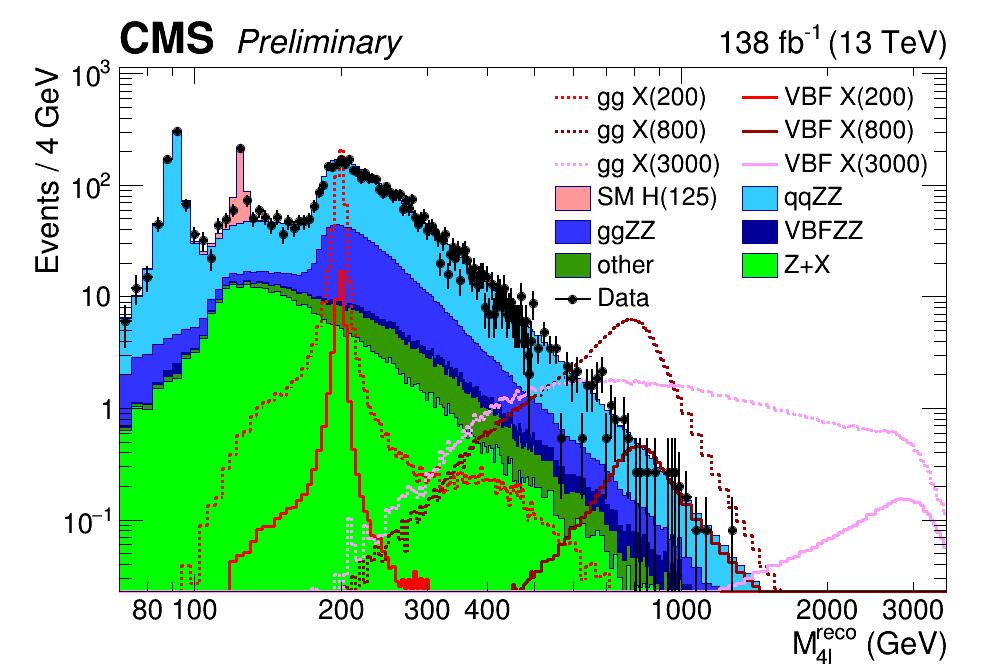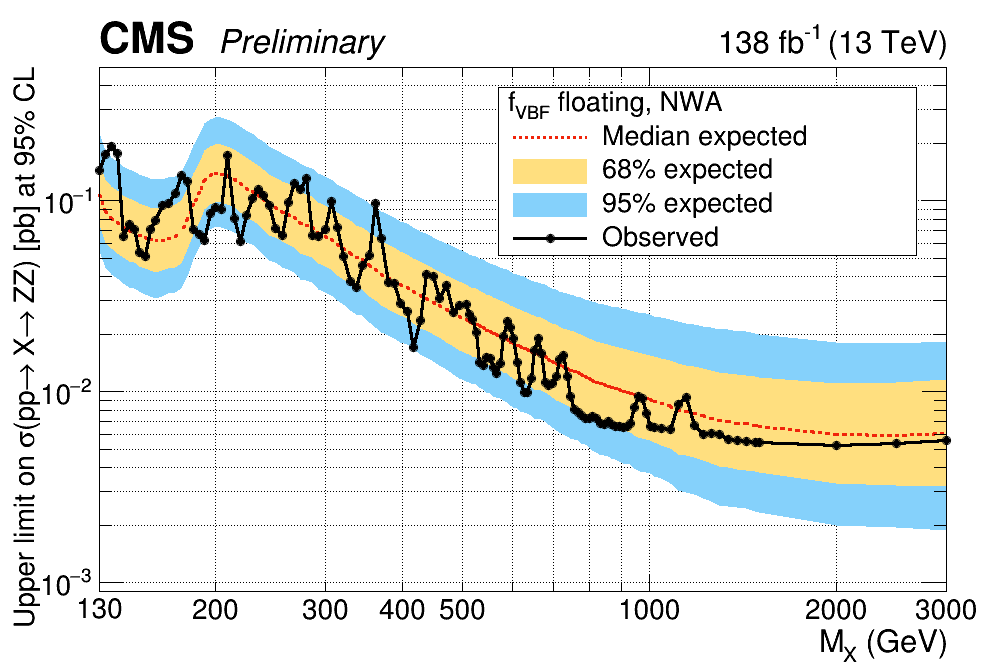
The Higgs boson is a fascinating elementary particle, and its discovery twelve years ago cemented the standard model (SM) of particle physics as the most accurate description of nature at and below the electroweak energy scale. However, many puzzles remain, including what the nature of dark matter is, why matter and antimatter exist in unequal amounts in our observable universe, and so on.
A latest search conducted by the CMS experiment hunts for a heavier Higgs boson (X), a potential puzzle solver. We focus on the scenario where X decays into four leptons via two Z bosons, with leptons being electrons or muons. This is known as the golden channel in Higgs boson searches, benefiting from its high efficiency, good energy resolution and low backgrounds. Similar to the dominating production mechanisms of the SM Higgs boson, we assume that the heavy Higgs boson can be produced from gluons or vector bosons (W and Z particles). “Feynman” diagrams in Figure 1 depict these modes of production, and the decay of the produced Higgs boson into four leptons.

Figure 1: Feynman diagrams depicting the production (left: from gluons; right: from vector bosons) and the decay of a new heavy Higgs boson X.
Four reconstructed leptons are used in each selected event to build the X candidate. The existence of such a particle would bring out an excess on top of backgrounds. Two variables are used to examine such excesses: the 4-lepton invariant mass, and a discriminant based on other kinematic information of the event. The distribution of the invariant mass in signals – corresponding to different production mechanisms and masses of X, backgrounds and the observed data are shown in Figure 2. The signal distributions have distinctly different shapes from the background, and this helps us distinguish between them.

Figure 2: The 4-lepton invariant mass distributions in the observed data, various backgrounds, and some examples of signals. The data is shown as black dots; the backgrounds are shown as filled areas; the signals are shown as dashed (produced from gluons) and solid (produced from vector bosons) lines.
Following a model-independent approach, we can explore a wide range of mass values for this new particle, and the results can be interpreted with any relevant model beyond the SM.
A thorough analysis indicates the absence of any significant excess from data. Therefore, upper limits are set on the probability of producing X and it decaying to a pair of Z bosons (Figure 3). Most observed results are within the SM predictions. A small excess exists at around 138 GeV but it is not significant enough, and has a sizable probability to be caused by background fluctuations. Furthermore, the light excess at around 650 GeV previously seen by the CMS and ATLAS experiments is not observed. We are excited to look into more data from the ongoing operation run of the LHC, and to possibly confirm or exclude the existing excesses.

Figure 3: The upper limits on the production cross section of the new heavy Higgs boson multiplied by its decay branching ratio to a pair of Z bosons, as a function of its mass. Results are computed with the “narrow width assumption”, requiring the width of the heavy Higgs boson to be negligible.
Read more about these results:
-
CMS Physics Analysis Summary (HIG-24-002): "Search for heavy scalar resonances decaying to a pair of Z bosons in the 4-lepton final state at 13 TeV"
-
Display of collision events: CERN CDS
-
@CMSExperiment on social media: LinkedIn - facebook - twitter - instagram
- Do you like these briefings and want to get an email notification when there is a new one? Subscribe here

